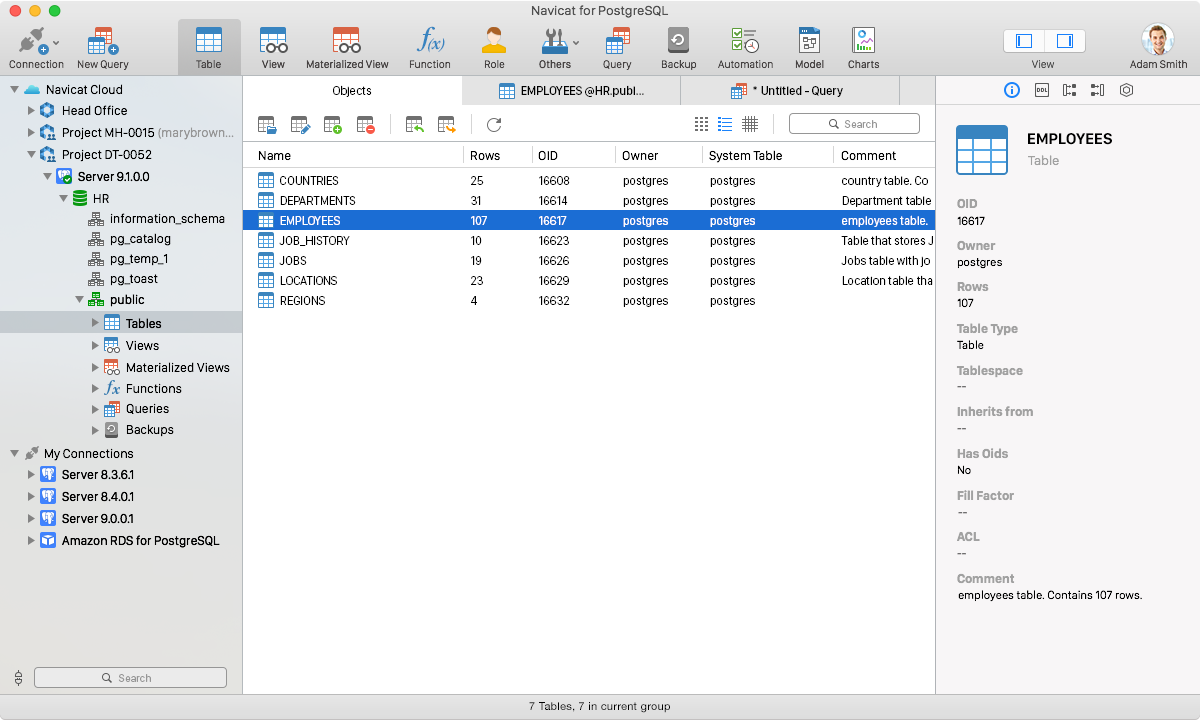

- #Postgresql for mac for mac
- #Postgresql for mac install
- #Postgresql for mac password
Drag any SQL file into the sidebar to add it to Postico. Postico autosaves changes so you never lose your work. Open the same file in multiple tabs or windows. Create multiple SQL files and organize them into folders. The new SQL query editor makes working with a lot of queries easier than ever: If you'd like to know more about Postico 1.5, click here. 
Postico 2 is the next major version coming after Postico 1.5. Whether you want to enter data, search data, or perform SQL queries, Postico has you covered. Our customers range from researchers and analysts to app developers and students. Postico 2 is a database app with a very strong focus on its core audience: people who use databases. While Postico 2 is our latest and greatest version of Postico (see whats new in the changelog), we continue to support Postico 1.5. If you have an older Mac, we also have old versions of Postico available.
#Postgresql for mac password
It’s important to also set a password for the default “postgres” user and use a graphical interface like pgAdmin to manage the database.Postico 2 is compatible with PostgreSQL 8.0 or later, Amazon Redshift, CockroachDB, Greenplum, and others. By following the steps outlined in this article, you can have PostgreSQL up and running on your Windows, Mac, or Linux machine in no time. In conclusion, installing PostgreSQL is a straightforward process that varies depending on your operating system. It’s also recommended to use a graphical interface like pgAdmin to manage the database more easily. It’s highly recommended to also create a user and set a password for the default “postgres” user for security reasons. Start the PostgreSQL server by typing “sudo /etc/init.d/postgresql start”Īfter the installation is complete, you can start using PostgreSQL to create and manage your databases.Once the installation is complete, initialize the database cluster by typing “sudo /etc/init.d/postgresql initdb”.
#Postgresql for mac install
For Red Hat-based distributions (such as Fedora) use the command “sudo yum install postgresql” to install PostgreSQL. For Debian-based distributions (such as Ubuntu) use the command “sudo apt-get install postgresql” to install PostgreSQL. The process for installing PostgreSQL on Linux will vary depending on your distribution. You can now access the PostgreSQL command-line interface (CLI) by typing “psql” in the terminal. Start the PostgreSQL server by typing “pg_ctl -D /usr/local/pgsql/data -l logfile start”.  Once the installation is complete, open the terminal and type “initdb /usr/local/pgsql/data” to initialize the database cluster. Open the installer package and follow the prompts to install PostgreSQL.
Once the installation is complete, open the terminal and type “initdb /usr/local/pgsql/data” to initialize the database cluster. Open the installer package and follow the prompts to install PostgreSQL. #Postgresql for mac for mac
Download the PostgreSQL installer for Mac from the official website ( ). You can now access the PostgreSQL command-line interface (CLI) by opening the “pgAdmin” application. After the initialization is complete, click “Finish” to complete the installation process. Once the installation is complete, you will be prompted to initialize the database cluster. Download the PostgreSQL installer for Windows from the official website ( ) Run the installer and follow the prompts to install PostgreSQL. In this article, we will walk you through the steps to install PostgreSQL on Windows, Mac, and Linux. Installing PostgreSQL is a straightforward process, but it can vary depending on the operating system you are using.







 0 kommentar(er)
0 kommentar(er)
